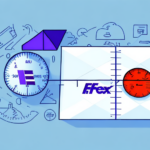Understanding FedEx Shipping Costs
FedEx shipping costs are influenced by a variety of factors, including package weight, dimensions, destination, and the selected service type. Grasping how these elements interplay can help you estimate shipping expenses accurately and identify opportunities to reduce costs.
Key Factors Affecting Shipping Costs
- Package Weight: Heavier packages incur higher shipping fees.
- Package Dimensions: Larger packages may require additional handling, increasing costs.
- Destination: Shipping to remote or international locations typically costs more.
- Service Type: Expedited services like overnight delivery are more expensive than standard options.
- Additional Services: Services such as insurance, signature confirmation, and special handling can add to the cost.
Calculating Shipping Costs Per Pound
To determine FedEx shipping costs per pound, utilize FedEx's online shipping calculator. Enter your package's weight, dimensions, origin, and destination to receive an accurate quote. Additionally, consider factors like fuel surcharges and accessorial fees that may apply based on your shipping needs.
Comparing FedEx Shipping Rates with Other Carriers
When selecting a shipping carrier, it's crucial to compare FedEx's rates with those of competitors like UPS and USPS to ensure you're getting the best value. According to the 2023 shipping industry report, FedEx remains competitive in expedited shipping services, while USPS often offers more economical rates for lighter packages.
Strategies to Reduce FedEx Shipping Costs
Optimize Package Size and Weight
Efficient packaging can significantly reduce shipping costs. Use appropriately sized boxes and eliminate unnecessary packaging materials to keep the package as light and compact as possible. This not only lowers costs but also minimizes the risk of damage during transit.
Utilize Discounts and Promotions
FedEx offers various discount programs for businesses, including volume-based discounts and loyalty rewards. Enrolling in the FedEx Business Discount Program can provide substantial savings on shipping rates, especially for high-volume shippers.
Negotiate Better Rates
For businesses with consistent shipping needs, negotiating rates directly with FedEx can lead to customized pricing agreements. Contact a FedEx sales representative to discuss your shipping volume and requirements, potentially securing lower rates tailored to your business.
Exploring FedEx Shipping Options
FedEx Ground vs. FedEx Express
FedEx Ground is a cost-effective option for non-urgent shipments, typically delivering within 1-5 business days domestically. This service is ideal for businesses looking to minimize shipping expenses without compromising reliability.
FedEx Express, on the other hand, offers expedited shipping options, including overnight and two-day delivery services. While more expensive, FedEx Express is suitable for time-sensitive deliveries requiring faster transit times.
FedEx Freight for Large Shipments
For shipments that are too large or heavy for standard services, FedEx Freight provides solutions such as Less Than Truckload (LTL) and Full Truckload (FTL) shipping. These options cater to businesses with significant shipping volumes, offering scalable solutions to meet diverse logistical needs.
Leveraging Technology to Optimize Shipping Costs
Integrating shipping software and technologies can streamline your shipping processes, leading to cost savings and increased efficiency. Tools that offer rate comparisons, automated label printing, and real-time tracking can help manage shipments more effectively. For instance, using FedEx Ship Manager can simplify label creation and tracking, reducing administrative overhead.
Avoiding Common Mistakes to Minimize Shipping Expenses
Mistakes such as inaccurate package measurements, improper packaging, and incorrect destination details can lead to increased shipping costs. Ensuring accuracy in these areas helps prevent additional fees and delays. Always double-check package weights and dimensions, use appropriate packaging materials, and verify destination addresses before shipping.
Pros and Cons of Using FedEx for Your Shipping Needs
Pros
- Reliable Delivery: Consistent and timely deliveries with tracking capabilities.
- Comprehensive Services: Wide range of shipping options catering to various needs.
- Global Reach: Extensive international shipping network facilitating global business operations.
Cons
- Higher Costs for Large or Heavy Shipments: Larger packages incur increased shipping fees.
- Potential for Delivery Delays: Peak seasons may result in longer transit times.
- Surcharges: Additional fees for services like signature confirmation and special handling.
Overall, FedEx offers a robust shipping solution suited for a variety of business needs. Balancing the benefits against the potential drawbacks can help businesses make informed decisions regarding their shipping strategies.
Conclusion
Understanding and effectively managing FedEx shipping costs is essential for maintaining profitability in small businesses. By analyzing the factors that influence shipping rates, comparing options with other carriers, and implementing cost-saving strategies, businesses can optimize their shipping expenses. Leveraging technology and avoiding common mistakes further enhances efficiency, ensuring that shipping remains a streamlined and cost-effective component of your business operations.




















